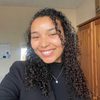
This week, we interviewed sound engineer Rob Martland, the composer of the Zero Gravity soundscape. Our CBO Kim sat down with Rob to speak about ‘mood instruments’, the importance of nostalgia, and how to decide what we - as Zero Gravity - sounds like.
1. How did you come up with the original Zero Gravity soundscape?
After lots of back and forth with Kim (Zero Gravity's Chief Brand Officer) over what kind of emotional tone we should strike (how grand it should be, how inspiring etc.), I started drafting some ideas - all while keeping in mind that the core melody had to be something that could be used for the Zero Gravity Mnemonic. After a few attempts we found something that struck the right balance, so all that was then left was iterating and improving. One notable thing I remember from this process was continually pushing how intense the crescendo was with each iteration. I learnt a lot about layering with classical instruments, and how different that process is to layering with electronic textures, which is my usual area of practice.
I learnt a lot about layering with classical instruments and how different that process is to layering with electronic textures.
1. How did you come up with the original Zero Gravity soundscape?
After lots of back and forth with Kim over what kind of emotional tone we should strike (how grand it should be, how inspiring etc.), I started drafting some ideas - all while keeping in mind that the core melody had to be something that could be used for the Zero Gravity Mnemonic. After a few attempts we found something that struck the right balance, so all that was then left was iterating and improving. One notable thing I remember from this process was continually pushing how intense the crescendo was with each iteration. I learnt a lot about layering with classical instruments, and how different that process is to layering with electronic textures, which is my usual area of practice.
2. How did you adapt the ‘mood’ of the original soundscape?
With the original soundscape being a grand and emotionally weighty piece of predominantly orchestral music, the notion of turning it into a social media intended piece of pop-dance music, initially felt far harder than it was in reality. Luckily the chords I’d built the original theme around were rhythmically regular enough to be transferred over to other genres quite capably. Which actually wasn’t something I thought to do when making the original theme, as my focus then was to simply make the best piece I could, but it definitely helped. It’s something I’ll certainly keep in mind on future projects.
The chords I’d built the original theme around were rhythmically regular enough to be transferred over to other genres quite capably.
I took the main chords from the theme and changed the instrument playing the chords from piano to synth. Then I went about adjusting the tempo, figuring out ways to work in the melody from the main theme, and then adding the genre staples needed to build the track in another genre. On all the different theme variations I’ve made, at some point in this process, there was enough of a foundation that reflected the original theme, that then allowed me to work on the piece as a separate piece of music - adding all the creative flourishes that would help each piece to stand out and work as a separate and whole piece of music.
4. What is your working process like when designing a soundscape?
My process always starts with experimenting. I’ve learnt over the years to trust my gut when something just “feels right”. Typically I’ll set myself up with an instrument that reflects the genre I’ve been asked to write within, and then I’ll experiment and play that instrument until something that reflects the brief emerges. It’s usually quite a quick process, as it often only takes one chord, or a small melody line. After finding that chord or that melody, I’ll find the following chord or notes that work and so on. I make it sound quite clinical, but there’s a lot of trusting my feeling with it.
My process always starts with experimenting. I’ve learnt over the years to trust my gut when something just “feels right”.
On top of all of this, there’s always a three part conversation going on that I have to keep in check. There’s my own musical inclinations (what sounds good to me), the brief from the client (the adjectives and mission statements intended for the piece), and the piece trying to shape itself (a process of getting out of my own way, and letting the song form itself intuitively).
In recent years I’ve found that having reference tracks definitely makes the whole process quicker. I’ve found that when clients ask for a composition to sound like another track, they often mean that they want something with a similar emotional feeling, that they’re not necessarily asking for a like for like copy with just enough variations. So with a few reference pieces, I can get a clearer sense of emotion that they want me to write their piece within. A collection of pieces so often says so much more than the client can express through a list of words.
6. What are you exploring as a sound designer at the moment?
Often it’s an exploration of making a sound that feels both correct physically and correct emotionally. The camera shutter sound used on iPhones is from an older style analogue camera for instance - even though modern cameras don’t really sound like that, emotionally it’s more satisfying, perhaps even nostalgic to hear that longer clicking sound.
Often it’s an exploration of making a sound that feels both correct physically and correct emotionally.
And often sound design is a process of becoming unnoticeable. There's contexts where if you’re doing your job correctly, the viewer/experiencer won’t notice that anything’s off or has even been done at all. This is an obvious example, but you used a subtle waves lapping sound for a visual of larger waves crashing, despite the sound source being correct, we'd intuitively feel that something was off. So in this capacity it’s about exploring how to most effectively make something feel correct.
The technologies we use for this are pretty much the same as ever, microphones, recorders, computers, and the excessive messing about with all three. Software has recently stepped into a new area in the last 4 years or so, it’s subtle but even with rudimentary AI assisted tools, audio manipulation has come quite a way. I’m interested to see what’s being worked on right now in response to this new wave of AI tools - I’m just praying to the machine overlords that I won’t be out of a job.
I’m interested to see what’s being worked on right now in response to this new wave of AI tools - I’m just praying to the machine overlords that I won’t be out of a job.
7. Do you picture the music being played in a certain landscape/associated with certain visuals?
I don’t think I’m particularly visual when it comes to where the music sends me - though I remember reading an interview with a sound designer and he challenged the reader to look at abstract pieces of graphic design, or brand logos, and then to imagine what the sound for that visual would be - it’s so much harder than imagining something for a stunning alpine landscape for instance, but it gets your brain to think more abstractly. I’d really recommend practising it for anyone starting out as a sound designer or composer.
8. How did this experience of creating the piece for us compare to creating other soundscapes?
I really enjoyed the process of collaboration and truly building something from the ground up. A lot of times you enter a project to find the team already has a rigid idea of what they’d like, but together with Kim I got to experiment and build something new - and I believe far stronger and personal to Zero Gravity than if it had been a 'smashed out in a week' type of project.
9. Which three words would you use to define the soundscapes?
Inspiring, soaring, prospective.
You can hear our soundscape used in all of our videos, housed on our website.
















